Demand outweighs supply in the evolving world of Japanese whisky, but most of these bottles are out there waiting for you.
Since its rapid ascent to renown a decade ago, Japanese whisky has sat atop the ever-rising mountain of in-demand bottles, prized for the elegance and balance of its blends and—once upon a time—the excellent ratio of maturity and quality to price.
Those days are long gone, unfortunately, as Japan’s distillers wait for stocks to mature while its whisky market continues to explode.
Why Is Japanese Whisky Popular?
Ever since Suntory’s 2013 Yamazaki Sherry Cask won “World Whisky of the Year” in the 2015 edition of Jim Murray's Whisky Bible, it thrust Japanese whisky makers—who've been around for decades—into the spotlight. That exposure was a double-edged sword, causing the demand for Japanese whiskies to dwarf the supply.
Related: 5 Things You Need to Know About Japanese Whisky
“The available reserves from the larger distillers, including Suntory and Nikka, sold out immediately,” says Nima Ansari, a buyer specializing in Japanese whisky for Astor Wine and Spirits. With no juice left, distillers had to discontinue their oldest products and limit others while they focused on creating new, younger variants just to keep some whisky on the shelves. “This naturally raised the price for everything,” Ansari says, “especially the older expressions.”
It’s no longer possible to find a shelf full of Yamazaki 12-Year-Old priced in the double digits, or age-statement Nikka Yoichi and Miyagikyo. But a host of new brands have swept in to offer more options, opening up ideas about what makes a uniquely Japanese whisky.
What Is Japanese Whisky Made From?
As a category, Japanese whisky has long suffered an identity crisis, with little formal regulation to help define it. That's allowed producers to import whisky from anywhere in the world and blend and bottle it as “product of Japan,” without disclosing that not all the liquid was actually made in the country.
A new, voluntary labeling standard passed by the Japan Spirits & Liqueurs Makers Association takes aim at the practice, however, by requiring member companies to be transparent about using imported whiskies in blends. Many producers are continuing to make such whiskies, often calling them “world blends.”
Related: The 50 Best Whiskeys in the World
Many of the best Japanese whiskies you can find today diverge completely from the tradition of single malts and blends, instead basing themselves on older distilled spirits traditions, such as shochu and awamori. These spirits, made with koji, a mold that turns starches into sugar, are distilled from rice or barley (among other ingredients) and usually sold with little to no cask maturation. When aged in barrels, however, they take on many familiar whisky characteristics. Several brands have established themselves in the last few years, carving out a niche among whisky drinkers who prize their flavorful and unique character—and the fact that they're 100 percent made in Japan.
Due to the scarcity, if you’re shopping for a bottle of Japanese whisky, you’re increasingly faced with two options: the younger, unmatured offerings, typically less expensive though by no means cheap, or pricier bottles.
How to Drink Japanese Whisky
“I’d stay away from the younger stuff,” advises Flavien Desoblin, owner of New York City’s Brandy Library bar and Copper and Oak, a bar with 100 Japanese whiskies that eschews cocktails to serve the spirits pure, in one- or two-ounce pours. “Younger products from newer distilleries could be interesting and great to watch from the future, but I’d go something with an age statement or a recurring limited edition. You’re assured a quality spirit.”
Where to Buy Japanese Whisky
Dekanta is a great online resource to buy Japanese whiskies. In addition to the regular (still expensive) selection, there’s a “Rare” page for ultra-exclusive finds like Hakushu 25, Yamazaki 25, and bottles from Ichiro’s Malt Card Series.
Related: Best Sites and Memberships to Get Rare, Limited-edition Whiskey
Both Desoblin and Ansari agree you’ll have to put in a little more effort to find the right bottles than you would for a Scotch or a bourbon, but you also don’t have to go broke when buying Japanese whisky. As new distilleries come online and drinkers discover the diversity that exists within the category, the landscape should continue to evolve.
For now, if you're searching for the best Japanese whiskies, you can't go wrong with the following selection. From Hibiki Japanese Harmony Whisky to Suntory Yamazaki, these bottles provide something for everyone and are a solid representation of Japanese whisky across multiple styles.
Best Japanese Whisky to Try

Courtesy Image
1. Nikka Taketsuru Pure Malt
This blend of single malts from Nikka’s two distilleries—Yoichi and Miyagikyo—debuted an updated recipe in November 2020. With sherry cask notes emphasized, the blend also highlights more smokiness from the Yoichi component—yet it retains the signature elegance and balance that it's always displayed. With the new regulations stipulating that Japanese whisky makers disclose whether they’re sourcing whisky from abroad, Taketsuru is the rare “pure malt” that's 100 percent made in Japan.
[$90; wine.com]
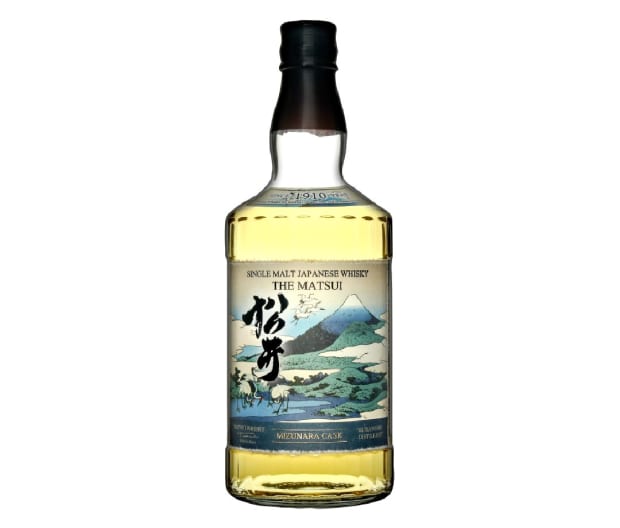
Courtesy Image
2. Matsui Mizunara Cask
Fully produced at the Kurayoshi Distillery, this single malt spends its whole life in casks made of mizunara oak, which are expensive and difficult to make, and thus rare even within Japan. The resulting flavors mingle signature mizunara notes, like spice and sandalwood, with Matsui’s inherent fruity sweetness. With its striking label that reproduces Katsushika Hokusai’s “Thirty-Six Views of Mount Fuji,” this whisky stands out even before you crack open the bottle.
[$95; drizly.com]
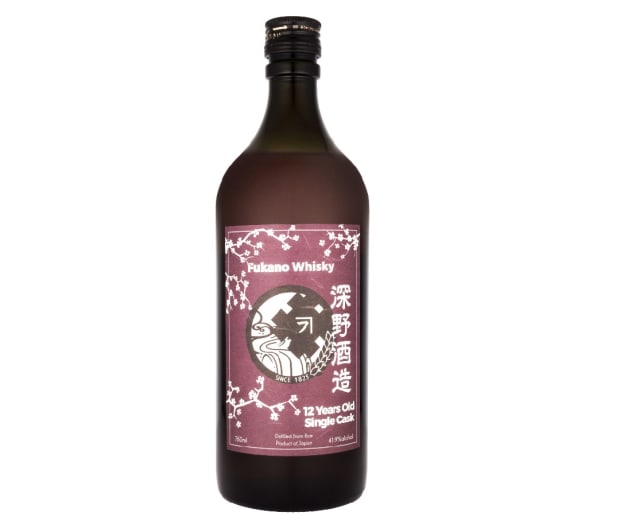
Courtesy Image
3. Fukano 12-Year-Old Single Sherry Cask
Made from rice and koji at a distillery that’s been operating since 1823, this whisky offers advanced age and complex character at an accessible price. Always bottled as a single cask, exact flavors vary from barrel to barrel, but typically showcase warm spice, deep fruitiness, and chewier texture than usual for koji whisky, thanks to the dozen years in oak. Limited edition by its nature, this whisky is still such a well-kept secret that finding a bottle won’t be too tough.
[$107; drizly.com]
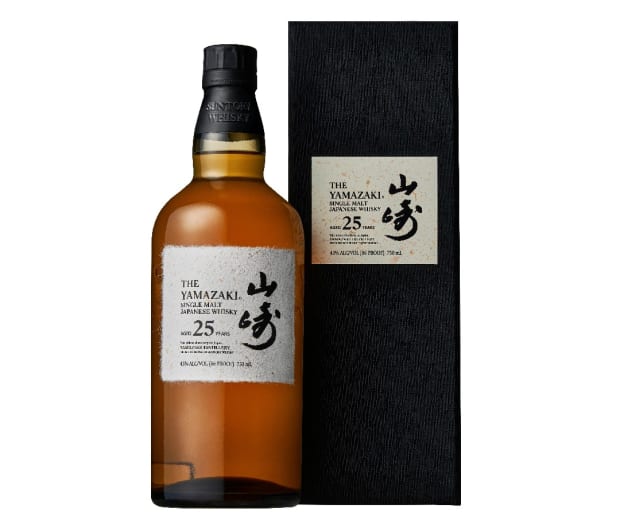
Courtesy Image
4. Yamazaki 25-Year-Old
If you have serious dough to drop on whisky, consider this re-release of a classic from Japan’s oldest single malt distillery. With a new recipe by chief blender Shinji Fukuyo that incorporates American, Spanish, and Japanese mizunara oak casks, the whisky is a masterwork of maturation and balance. Aromas of apple blossom, sandalwood soap, and waxed lemon give way to a silky palate full of dried apricots, walnuts, spice, and gentle smoke. The days of finding extra-mature Yamazaki at everyday values are long gone, but this one gives ample reasons to merit its stratospheric price tag.
[$10,055; drizly.com]

Courtesy Image
5. Chichibu Ichiro’s Malt & Grain Limited Edition
The use of imported scotch and other whiskies as blending ingredients has been an open secret in the Japanese whisky industry for years. Most companies that practice this haven’t openly disclosed it until recently, but Ichiro Akuto, founder of Chichibu Distillery, has been transparent since the beginning. His Malt & Grain releases, which he calls a “world blend,” include Chichibu’s own single malt, as well as single malts and grain whiskies from Scotland, Ireland, Canada, and the United States. The Limited Edition, released in smaller amounts than the widely available core Malt & Grain, ramps up the ages of the components, which range from 10 to 40 years old.
[$250; blackwellswines.com]

Courtesy Image
6. Ohishi Sakura Cask
Japan’s mizunara oak draws a lot of attention for whisky maturation, but the country’s famed cherry blossom trees (“sakura” in Japanese) also offer a unique prospect for flavor creation. The perfumy aromas and sweet, delicate flavors of stone fruit that pervade this delicate rice-based koji whisky are transportive. You can practically feel the soft petals of cherry blossoms gently falling around you as you sip. This is an utterly unique whisky that’s a must-try for adventurous drinkers.
[$93; drizly.com]

Courtesy Image
7. Mars Tsunuki Peated
Parent company Hombo Shuzo got into the whisky business in 1949, though production wasn’t always steady over the years. For the last decade, however, the company has been laying down beautiful single malts at its Mars Distillery and, since 2016, Tsunuki Distillery. Located 750 miles apart, in different climates, the two sites make distinct flavor profiles, with Tsunuki favoring a heavier, thicker character—something that benefits the smoky peat of this release, especially as it’s bottled at 50 percent ABV.
[$253; eversonroyce.com]

Courtesy Image
8. Takamine
The newest koji whisky in the U.S., this one is made from barley, rather than rice, and aged for 8 years. It’s named for Jokichi Takamine, a 19th-century scientist and distiller who pioneered the use of koji in American whiskey. (Had bad luck not scuttled his business, Takamine might have changed the face of bourbon as we know it.) Though only 40 percent ABV, a mouth-filling texture and flavors of chestnuts, clementine, and gently burning spice make this whisky feel rounded and complete—and way too easy to drink.
[$116; drizly.com]

Courtesy Image
9. Kurayoshi 12-Year-Old
As a “pure malt,” the origins of Kurayoshi’s components are shrouded in mystery, though at least some of the whisky comes from its own distillery in Tottori prefecture. As long as that doesn’t bother you, this expression offers stellar value, with 12 years of age and a price tag under $100. As a bonus for American drinkers, Kurayoshi’s U.S. importer specifically requested the whisky at 46 percent ABV, a few proof points higher than the 43 percent ABV that it’s bottled at for the rest of the world.
[$109; drizly.com]
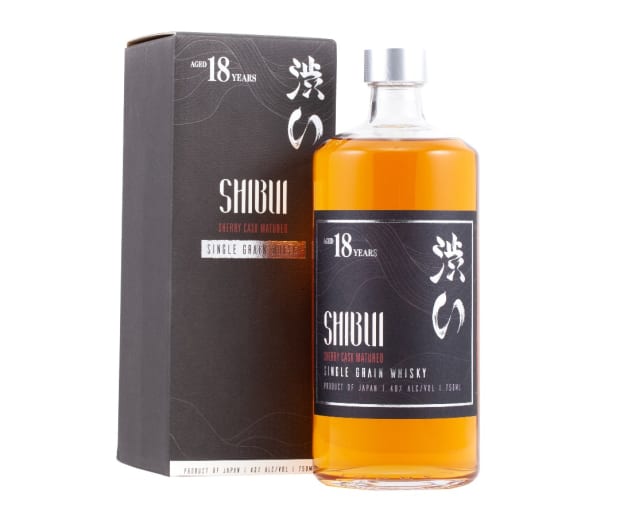
Courtesy Image
10. Shibui 18-Year-Old Sherry Cask Single Grain
Independent bottler and blender Shibui labels its range of rice-based whiskies “single grain,” sourcing them from several different distilleries. The 18-year-old was made at Kumesen Distillery from indica long grain rice and matured in fino and manzanilla sherry casks, which lend nuttiness, subtle spice, and fresh fruit aromas and flavors. Along with Shibui’s other single grain whiskies, it’s made with indigenous Okinawan black koji, also a key ingredient in the production of awamori.
[$319; drizly.com]

Courtesy Image
11. Hibiki Japanese Harmony Whisky
While it’s a blend, without an age statement, it’s arguably one of the best Japanese blends that can rival most blended scotches. It’s complex and flavorful, but the taste doesn’t overwhelm you when sipping it neat.
[$100; drizly.com]

Courtesy Image
12. Suntory Toki Japanese Whisky
You’re most likely to find Toki in stock, regardless of your location. It’s inexpensive, light on the palate, and great on the rocks. If you want an easy sipper, try Toki in a highball with club soda, and a spritz of fruit. The cocktail is so massive in Japan, they make machines just to crank out the drinks.
[$39; drizly.com]

Courtesy Image
13. Shinshu Mars Iwai Tradition Whisky
This affordable pick mingles Japanese-made whisky with imported stock, aged in bourbon, sherry, and wine barrels. The Mars Shinshu Distillery—founded by the Hombo family in 1908—earns the distinction of being Japan’s highest distillery at 798 meters. The alpine location, situated in the Nagano mountain range, provides temperate humidity and exceptional water.
[From $54; caskers.com]

14. Nikka Coffey Grain Whisky
No, there’s no coffee in here. Coffey refers to the name of the man who invented a continuous distillation still, an ancient way of distilling a lighter style of whisky, which Nikka still employs. “In many ways, this is one of the standard expressions that have helped define the category,” Ansari says. “It’s really satisfying, something you can drink every day,” echoes Desoblin. If you can’t find the Grain, the Nikka Coffey Malt is equally satisfying.
[From $69; drizly.com]
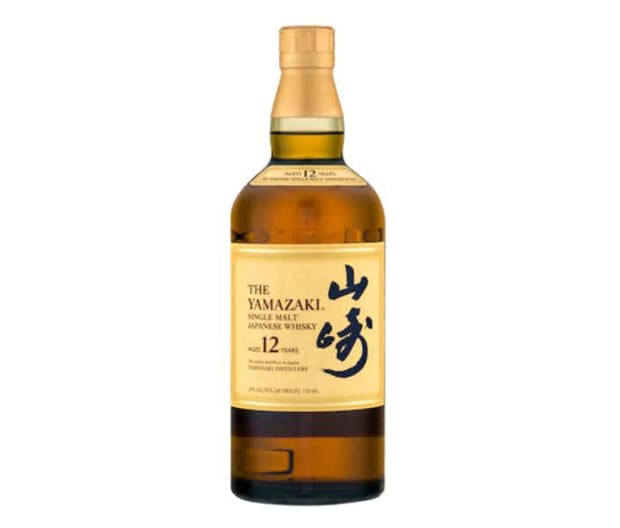
Courtesy Image
15. Yamazaki 12 Year Old Whisky
The price of this bottle is steadily creeping up. “You’re talking about something that should be $80, max, but it’s now going for as much as $120,” Desoblin says, of Suntory’s whisky that really started it all, especially in the United States. “Suntory was around 25 years ago, trying to sell this 12-year-old and it wouldn’t move. Up until a few years ago, no one would drink it. Now, everyone loves it,” Desoblin says.
[From $200; drizly.com]

Courtesy Image
16. Hibiki 17 Whisky
“This has an incredible taste and has been considered the staple of Japanese whisky,” Desoblin says. Hibiki 17 is comprised of Yamazaki, Hakushu, and Chita grain whiskies, and matured in Japanese oak. “It really shows the know-how of Suntory [its distiller]. It’s a blend of Scottish base and American influence with Japanese flair. The attention to texture and mouthfeel are incredible, and the way the flavors all meld together is perfect.” Hibiki’s announced it’s discontinuing the release, so act now if you want some.
[From $84; totalwine.com]
from Men's Journal https://ift.tt/NezoyXx
No comments:
Post a Comment